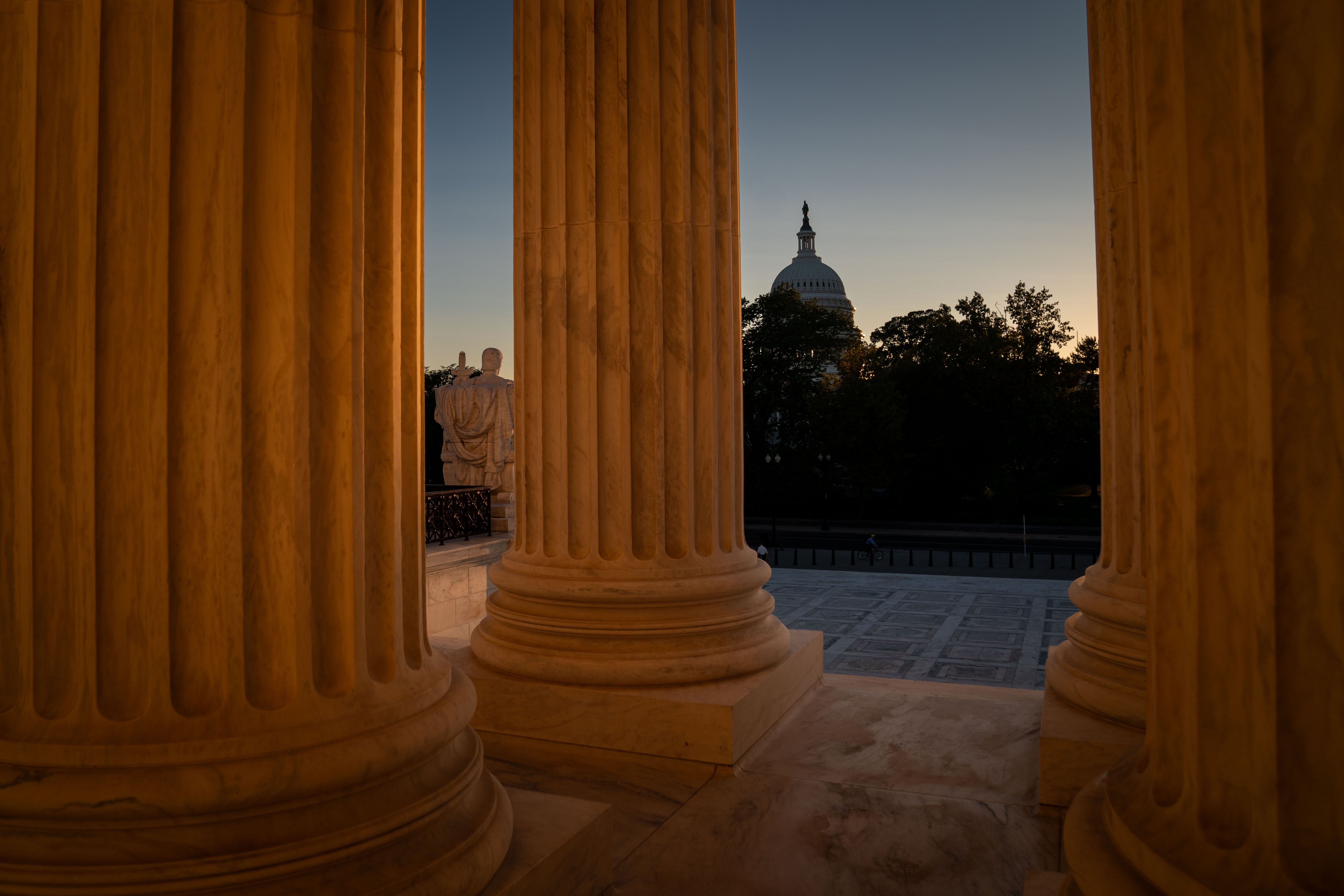Supreme Court allows disputed South Carolina voting map

The dome of the U.S. Capitol seen from the Supreme Court. (File photo by Kent Nishimura for the Washington Post)
The Supreme Court on Thursday allowed the use of a South Carolina congressional map that a lower court said “exiled” thousands of Black voters to carve out a district safer for a White Republican incumbent.
At issue for the court was whether South Carolina’s new map, which was created by the GOP-led state legislature and moved Black voters from one district to another, was permitted to bolster the Republican majority or was an unconstitutional effort to divvy up voters by race. The 6-3 majority sent the case back to the lower court, finding that it erred when it determined race predominated the map-drawing process.
The case is one of several redistricting cases that has been closely watched because the U.S. House is so narrowly divided. Some of them won’t be conclusively decided until after this year’s elections and will determine districts for 2026 and beyond.
South Carolina had asked the justices to issue a decision by Jan. 1 so this year’s elections can proceed smoothly, but the justices apparently needed more time. The slow pace of the case prompted the lower court—a three-judge federal panel—to rule last month that the state had to use the disputed map this year no matter how the Supreme Court ruled. With the primary slated for June 11, there was no time to draw a new map, the panel said.
The panel found last year that the map illegally split Black neighborhoods in the Charleston area to create a “stark racial gerrymander.” Rep. Nancy Mace (R-S.C.), who had squeaked by her Democratic opponent in 2020, coasted to victory in 2022 in the redrawn district, keeping her seat in what has become a Republican-dominated 6-to-1 congressional delegation.
The judges found that South Carolina’s mapmaker tried to keep the Black population below a certain target in the district, treating Charleston County “in a fundamentally different way than the rest of the state.” Doing so would violate the 14th Amendment’s equal protection clause, which prohibits state lawmakers from considering race as the predominant factor in adopting a new map.
After the panel rejected the map, South Carolina asked the Supreme Court to intervene, saying that maintaining Republican dominance was the reason for the changes, not race. The state also said the changes were partly to protect Rep. James E. Clyburn, the senior Democrat who is part of House leadership. Clyburn represents parts of Charleston County, and his district lost population over the past decade.
The Supreme Court has said that partisan gerrymandering is not an issue for federal courts to decide but that attempts to discriminate on the basis of race are unconstitutional. The fact that Black voters lean dramatically toward the Democratic Party often makes for legal battles after the redistricting that follows every decade’s census.
The ruling came after conservatives on the Supreme Court recently provided a surprise victory to Black voters in Louisiana by blocking a lower court that could have reduced the number of majority-Black congressional districts in the state from two to one. The Supreme Court’s order in that case affects only the 2024 election, and the justices could revisit what the state’s election map looks like for 2026 and beyond.
In a separate case last year, the justices held that Alabama had illegally designed its congressional map to undercut the power of Black voters. Chief Justice John G. Roberts Jr. and Justice Brett M. Kavanaugh joined the court’s three liberals to form a majority, finding the state’s plan violated the Voting Rights Act by not creating a second congressional district—out of seven in the state—where Black voters made up a large enough share of the electorate to have a strong chance of electing their candidate of choice.
The South Carolina case is Alexander v. the South Carolina State Conference of the NAACP.



